Abstract
The selective cytotoxicity which Ro-07-0582 exhibits towards hypoxic cells is strongly temperature-dependent. This cytotoxicity is reduced by the radical scavenger cysteamine, suggesting that nitro radicals or nitroso intermediates are involved in cell killing by the drug. Chromosome aberrations are not induced by Ro-07-0582 even when the surviving fraction is reduced to 0-01.
Full text
PDF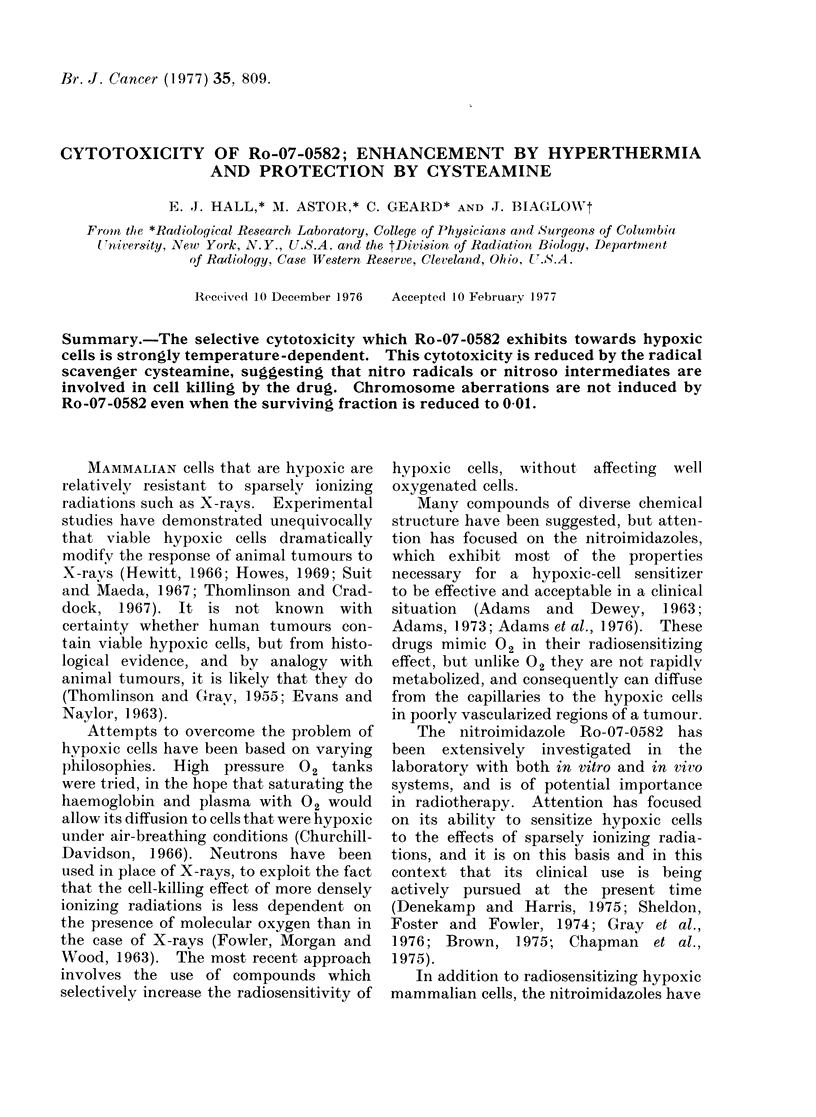
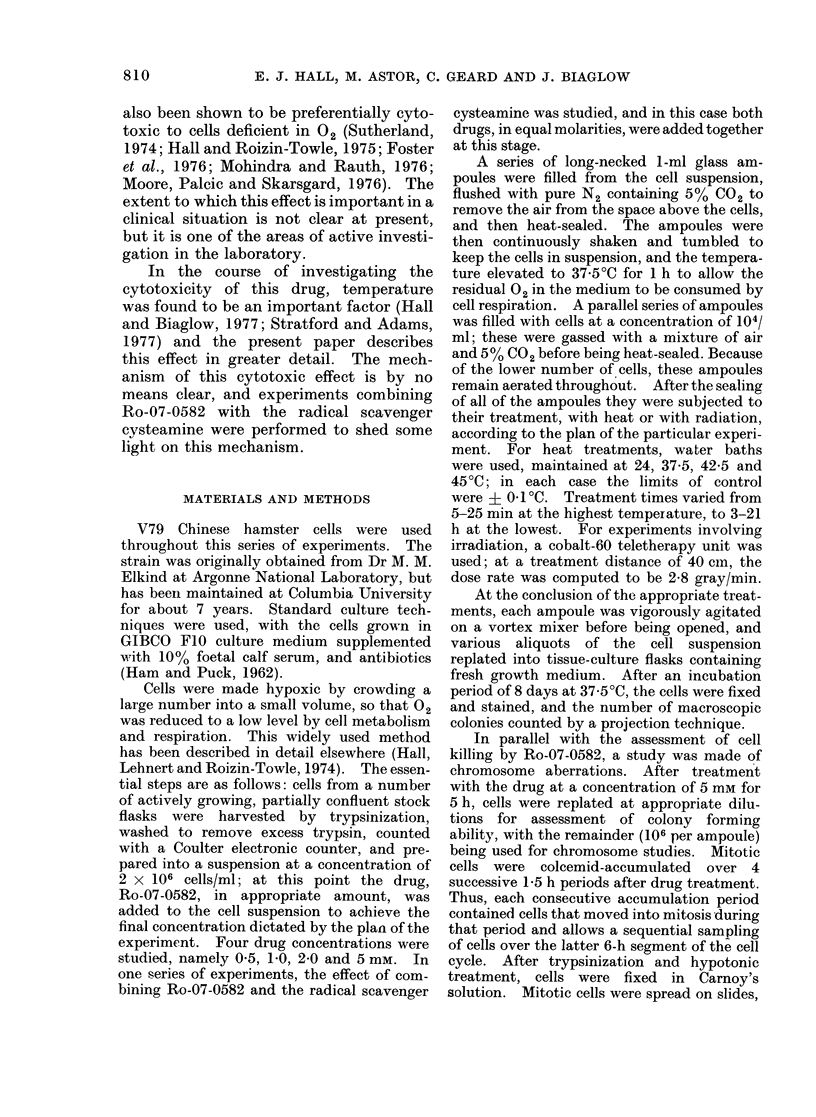
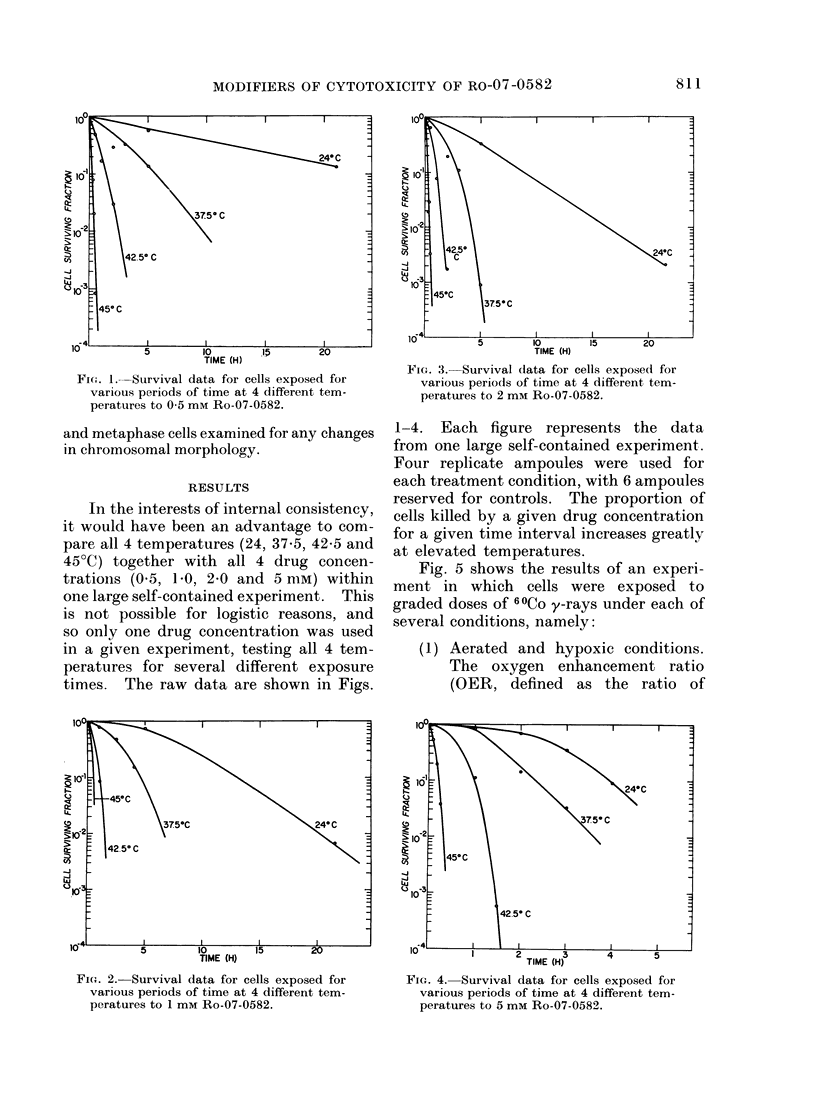


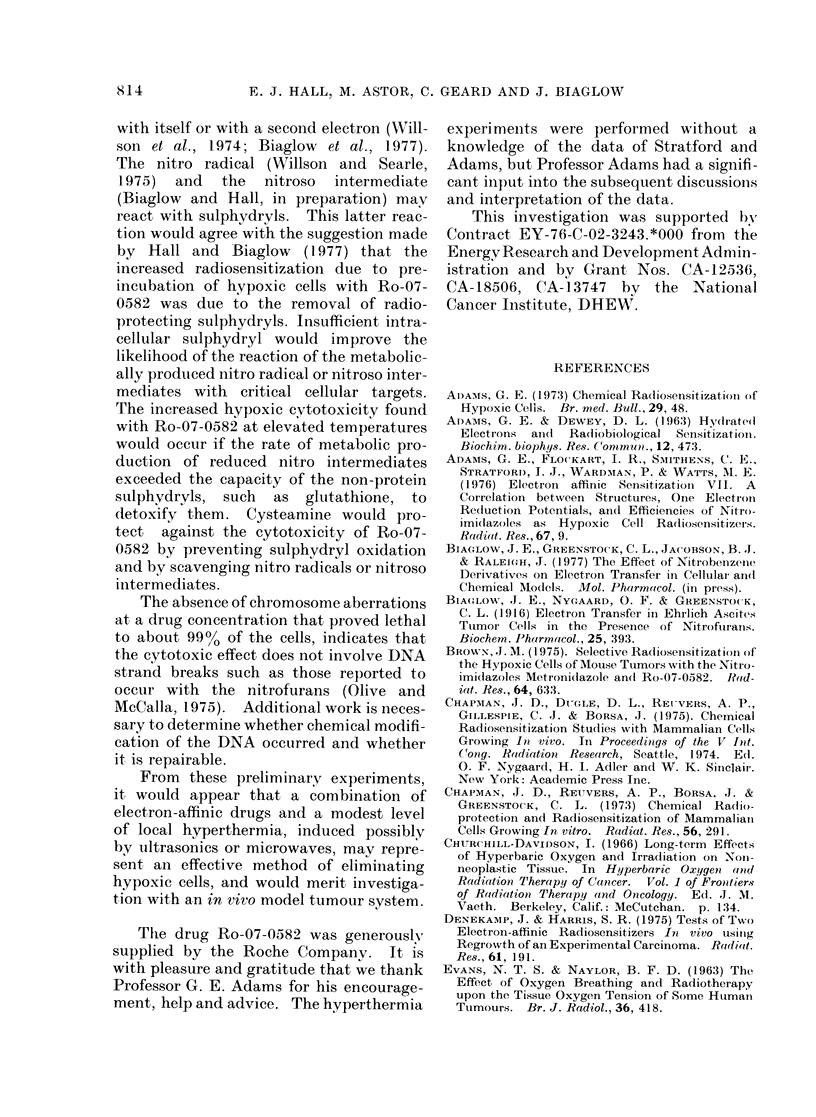
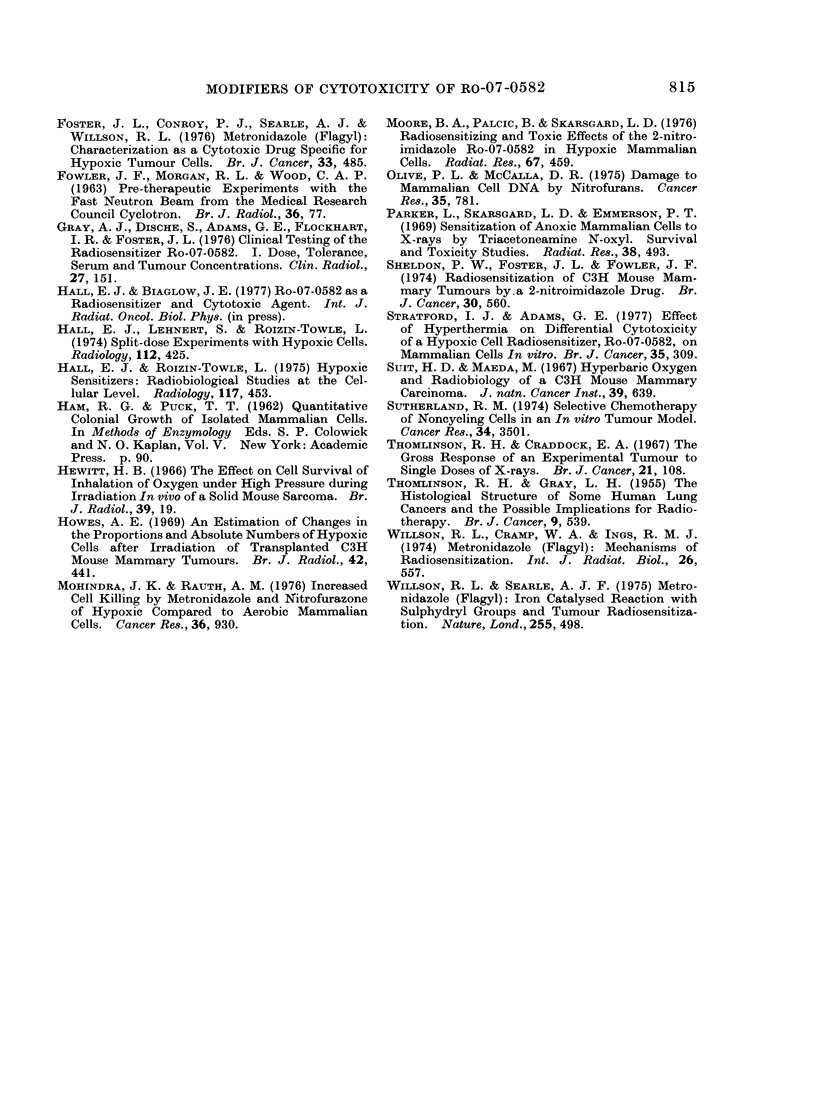
Selected References
These references are in PubMed. This may not be the complete list of references from this article.
- Biaglow J. E., Nygaard O. F., Greenstock C. L. Electron transfer in Ehrlich ascites tumor cells in the presence of nitrofurans. Biochem Pharmacol. 1976 Feb 15;25(4):393–398. doi: 10.1016/0006-2952(76)90339-7. [DOI] [PubMed] [Google Scholar]
- Chapman J. D., Reuvers A. P., Borsa J., Greenstock C. L. Chemical radioprotection and radiosensitization of mammalian cells growing in vitro. Radiat Res. 1973 Nov;56(2):291–306. [PubMed] [Google Scholar]
- Denekamp J., Harris S. R. Tests of two electron-affinic radiosensitizers in vivo using regrowth of an experimental carcinoma. Radiat Res. 1975 Feb;61(2):191–203. [PubMed] [Google Scholar]
- FOWLER J. F., MORGAN R. L., WOOD C. A. Pre-therapeutic experiments with the fast neutron beam from the Medical Research Council cyclotron. I. The biological and physical advantages and problems of neutron therapy. Br J Radiol. 1963 Feb;36:77–80. doi: 10.1259/0007-1285-36-422-77. [DOI] [PubMed] [Google Scholar]
- Foster J. L., Conroy P. J., Searle A. J., Willson R. L. Metronidazole (Flagyl): characterization as a cytotoxic drug specific for hypoxic tumour cells. Br J Cancer. 1976 May;33(5):485–490. doi: 10.1038/bjc.1976.78. [DOI] [PMC free article] [PubMed] [Google Scholar]
- Gray A. J., Dische S., Adams G. E., Flockhart I. R., Foster J. L. Clinical testing of the radiosensitiser Ro-07-0582. I. Dose tolerance, serum and tumour concentrations. Clin Radiol. 1976 Apr;27(2):151–157. doi: 10.1016/s0009-9260(76)80137-7. [DOI] [PubMed] [Google Scholar]
- Hall E. J., Lehnert S., Roizin-Towle L. Split-dose experiments with hypoxic cells. Implications for fractionated and low-dose-rate radiotherapy. Radiology. 1974 Aug;112(2):425–430. doi: 10.1148/112.2.425. [DOI] [PubMed] [Google Scholar]
- Hall E. J., Roizin-Towle L. Hypoxic sensitizers: radiobiological studies at the cellular level. Radiology. 1975 Nov;117(2):453–457. doi: 10.1148/117.2.453. [DOI] [PubMed] [Google Scholar]
- Hewitt H. B. The effect on cell survival of inhalation of oxygen under high pressure during irradiation in vivo of a solid mouse sarcoma. Br J Radiol. 1966 Jan;39(457):19–24. doi: 10.1259/0007-1285-39-457-19. [DOI] [PubMed] [Google Scholar]
- Howes A. E. An estimation of changes in the proportions and absolute numbers of hypoxic cells after irradiation of transplanted C3H mousemammary tumours. Br J Radiol. 1969 Jun;42(498):441–447. doi: 10.1259/0007-1285-42-498-441. [DOI] [PubMed] [Google Scholar]
- Mohindra J. K., Rauth A. M. Increased cell killing by metronidazole and nitrofurazone of hypoxic compared to aerobic mammalian cells. Cancer Res. 1976 Mar;36(3):930–936. [PubMed] [Google Scholar]
- Moore B. A., Palcic B., Skarsgard L. D. Radiosensitizing and toxic effects on the 2-nitroimidazole Ro-07-0582 in hypoxic mammation cells. Radiat Res. 1976 Sep;67(3):459–473. [PubMed] [Google Scholar]
- Olive P. L., McCalla D. R. Damage to mammalian cell DNA by nitrofurans. Cancer Res. 1975 Mar;35(3):781–784. [PubMed] [Google Scholar]
- Parker L., Skarsgard L. D., Emmerson P. T. Sensitization of anoxic mammalian cells to x-rays by triacetoneamine N-oxyl. Survival and toxicity studies. Radiat Res. 1969 Jun;38(3):493–500. [PubMed] [Google Scholar]
- Sheldon P. W., Foster J. L., Fowler J. F. Radiosensitization of C3H mouse mammary tumours by a 2-nitroimidazole drug. Br J Cancer. 1974 Dec;30(6):560–565. doi: 10.1038/bjc.1974.235. [DOI] [PMC free article] [PubMed] [Google Scholar]
- Sutherland R. M. Selective chemotherapy of noncycling cells in an in vitro tumor model. Cancer Res. 1974 Dec;34(12):3501–3503. [PubMed] [Google Scholar]
- THOMLINSON R. H., GRAY L. H. The histological structure of some human lung cancers and the possible implications for radiotherapy. Br J Cancer. 1955 Dec;9(4):539–549. doi: 10.1038/bjc.1955.55. [DOI] [PMC free article] [PubMed] [Google Scholar]
- Thomlinson R. H., Craddock E. A. The gross response of an experimental tumour to single doses of x-rays. Br J Cancer. 1967 Mar;21(1):108–123. doi: 10.1038/bjc.1967.10. [DOI] [PMC free article] [PubMed] [Google Scholar]
- Willson R. L., Cramp W. A., Ings R. M. Metronidazole ('Flagyl'): mechanisms of radiosensitization. Int J Radiat Biol Relat Stud Phys Chem Med. 1974 Dec;26(6):557–569. doi: 10.1080/09553007414551591. [DOI] [PubMed] [Google Scholar]
- Willson R. L., Searle A. J. Metronidazole (Flagyl): iron catalysed reaction with sulphydryl groups and tumour radiosensitisation. Nature. 1975 Jun 5;255(5508):498–500. doi: 10.1038/255498a0. [DOI] [PubMed] [Google Scholar]


